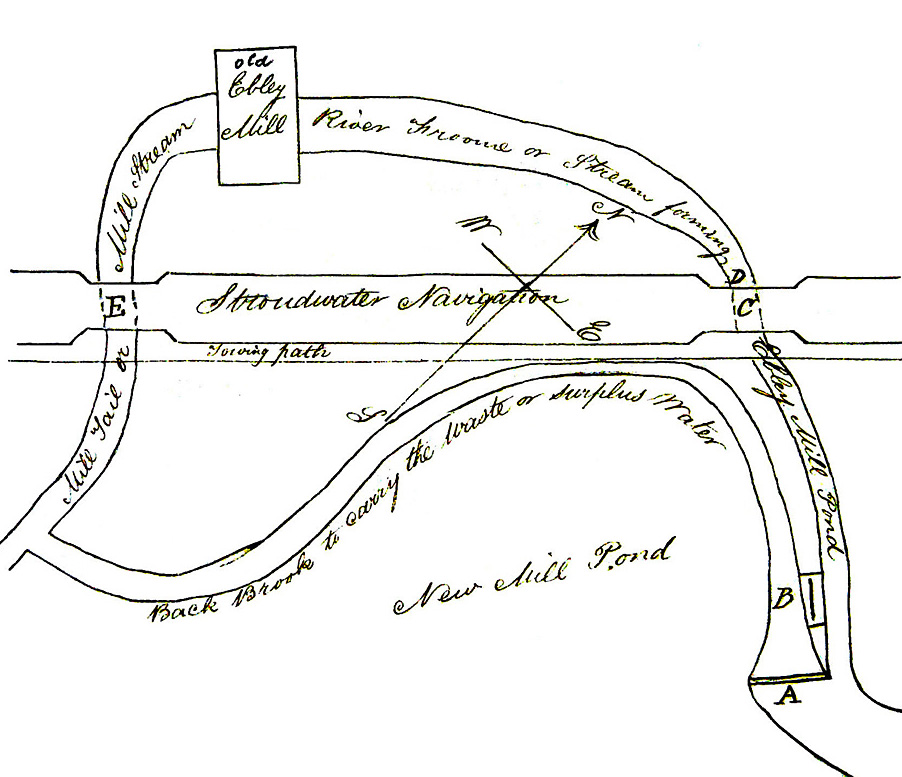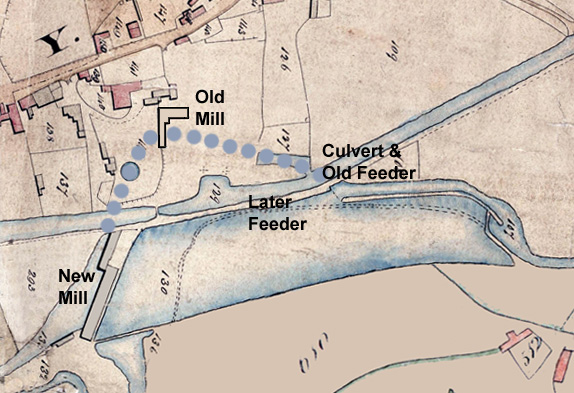Hugh Conway-Jones outlines the practical arrangements for drawing water from the River Frome at Ebley.
The main means of feeding water from the River Frome into the canal was via an adjustable weir just upstream of Ebley Mill. The river was nominally at the same level as the canal, but could be higher or lower depending on recent rainfall and whether the mill was working. The top of the weir was formed by wooden boards which normally prevented feed to the canal but which could be removed when a feed was required - usually on Sundays when the mill was not working. Attending the weir was an important duty of the local lock keeper. This study explains where this weir was located and how its circumstances changed over time.
Before the new mill was built in 1818, the old mill was on the north side of the canal, and to reach it, the main flow of the river had to pass under the canal through a culvert which was in the form of an inverted siphon. The feeder weir was incorporated into the north end of the culvert. The general arrangement is shown in the plan and accompanying notes below which come from a case written by the Stroudwater Company's solicitor in 1841 seeking Counsel's Advice on alternative ways of managing the feed. Note that the river upstream of the mill is referred to as a mill pond even though it was little wider than the normal river.


A. Weir fixing the level of Water in Ebley Mill Pond.
B. The Floodgates to let off the Water from the Mill Stream.
C.E. Culverts or Watercourses to carry the Stream under the Navigation
D. The Weir or Feeder erected when the Navigation was made.
This Weir D was placed at a level rather below the other Weir A for regulating the height of the Water in the Mill Pond and was provided with Paddles or Shut Gates so as to keep in or exclude Water from the Navigation. These Paddles were kept shut on ordinary occasions and were drawn out when the Navigation required feeding or supplying with Water.


During the 1840s, there was growing concern about the integrity of the culvert until the remaining need for it ended with the closure of the wool scouring operation and a new feeder weir was built on the towpath side in 1850. This allowed the culvert to be abandoned and no trace of it appears on later maps. The new feeder continued in service during the remainder of the canal's commercial life, and the remains of the weir structure can still be seen in the towpath today.
For the 1841 case for Counsel's opinion, see D1180/6/11 at Gloucestershire Archives.
For the Stonehouse tithe map 1839, see 'Know Your Place' online.
For minutes about the later feeder, see D1180/1/5 p84-94 in the Archives section of this website.
For the estimate for the later feeder, see D1180/9/21 at Gloucestershire Archives.